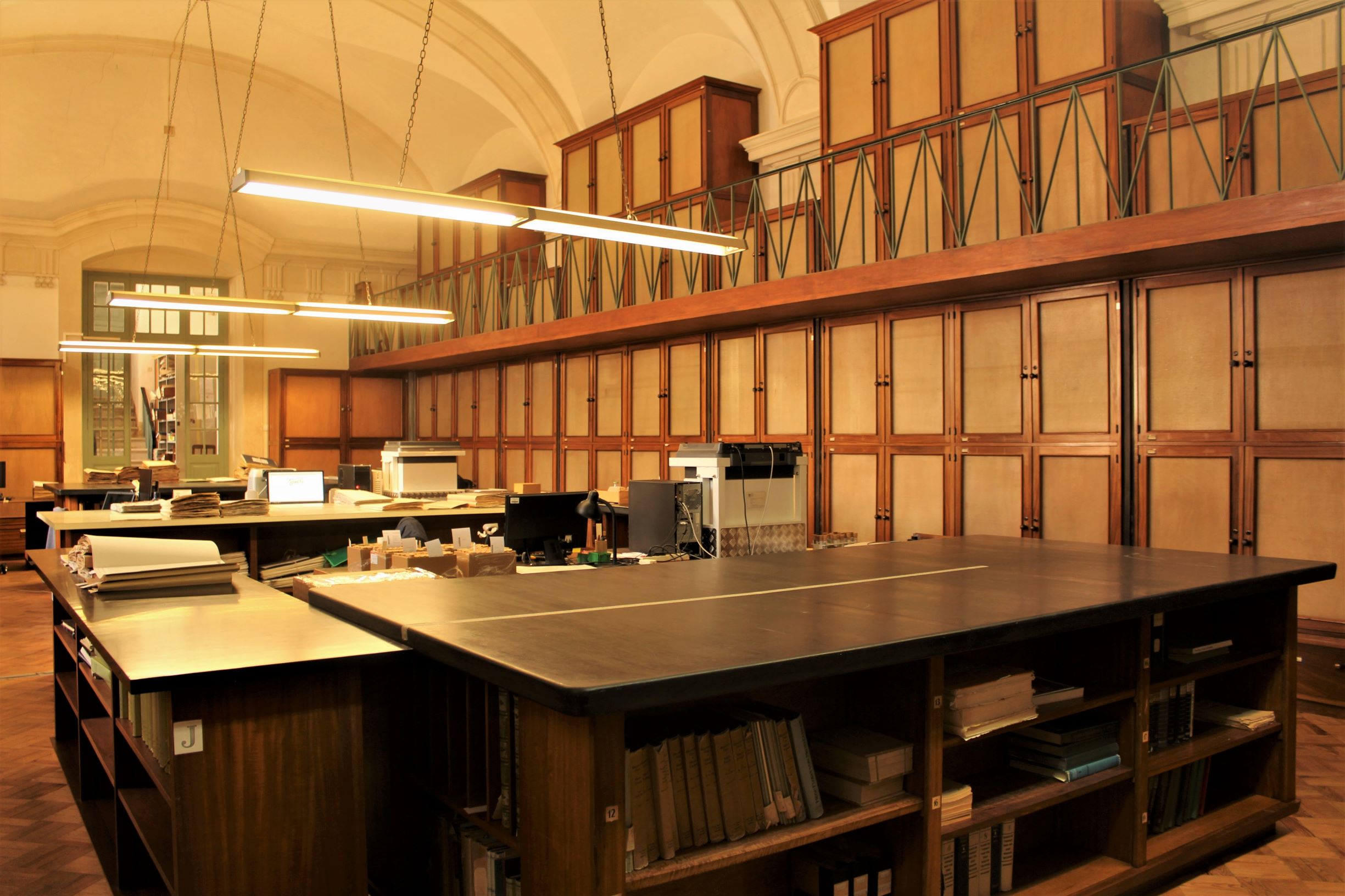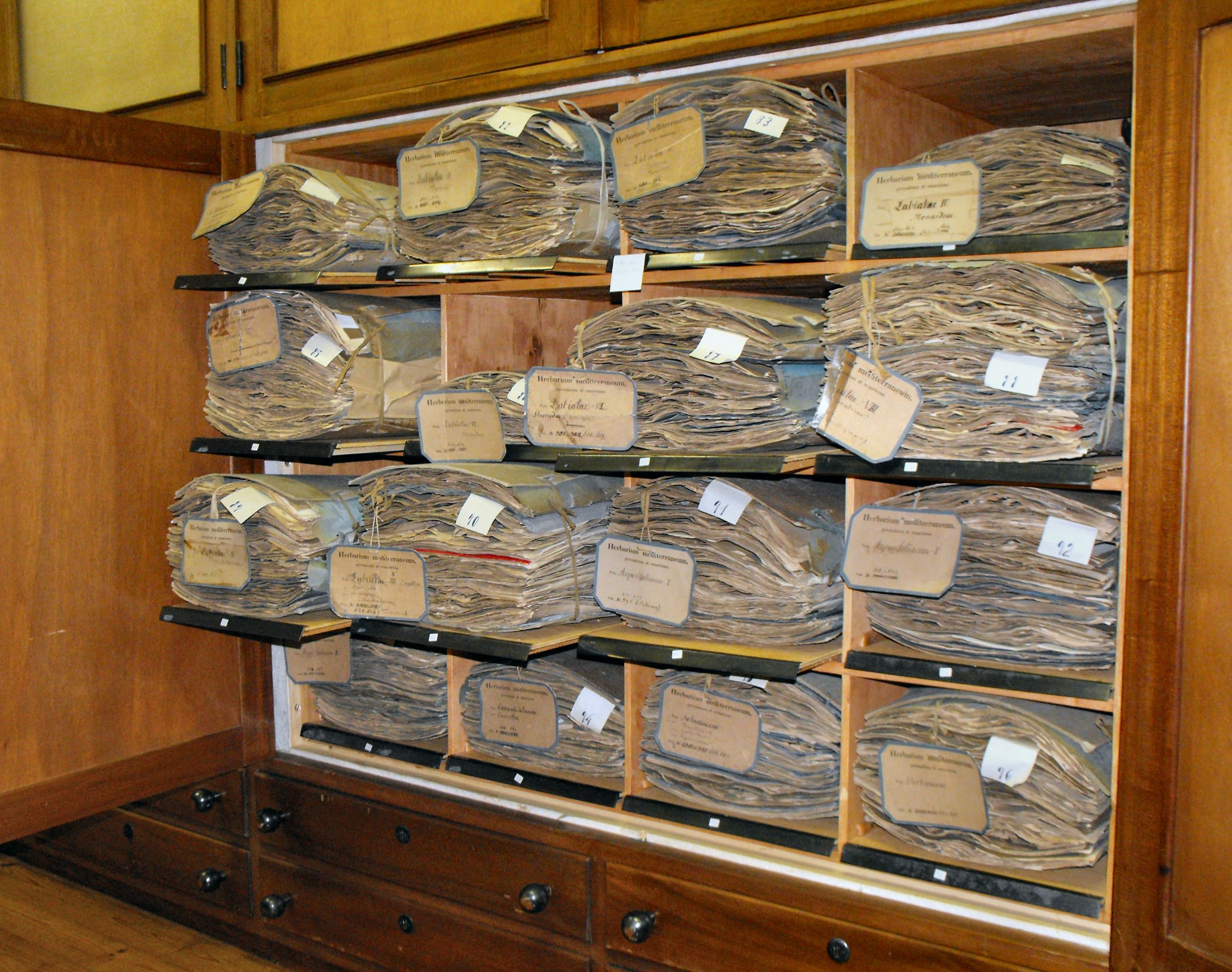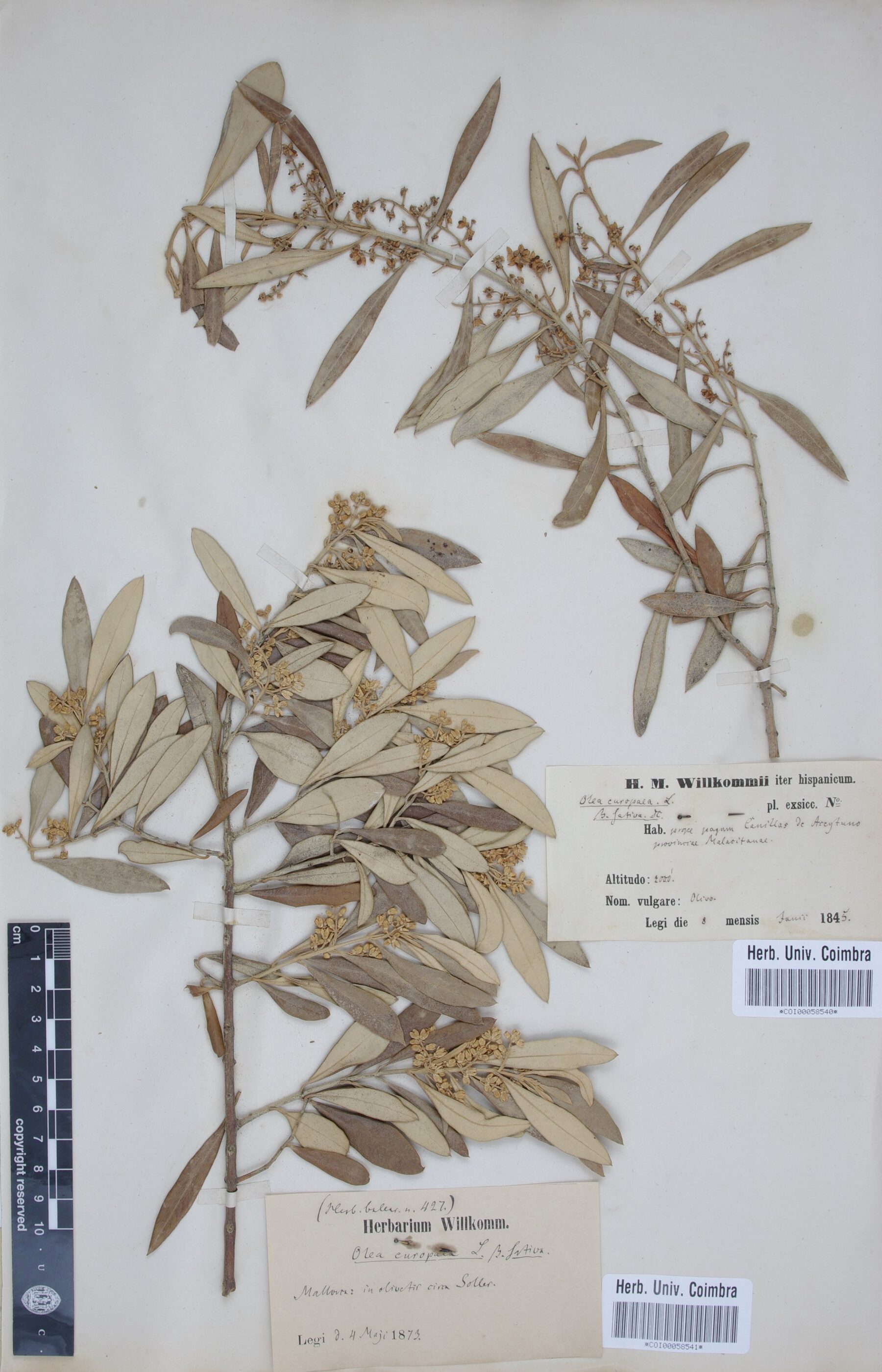
Moritz Willkomm: building an Iberian herbarium during political exile
An herbarium is a biological collection of plants properly preserved and organized according to a taxonomic classification. These collections aim to allow the study and expand the knowledge in several areas, such as botany, ecology, biogeography and ethnography. To make this possible, the information (date, place of collection, collector, habitat and associated species) obtained during the specimen collection remains on a label of the herbarium specimen. In this way, we preserve information that can be analysed and checked for centuries, being able to study changes in climate, landscape or human uses.
There are 3,100 herbaria on the planet, often associated with universities, museums and botanical gardens, accounting 390 million herbarium specimens. These are the result of multiple trips and expeditions carried out mainly over the past four centuries.
Herbarium of the University of Coimbra
Source: Herbarium of the University of Coimbra
In the context of historical collections, we can find the Willkomm’s one, included in the Herbarium of the University of Coimbra. It keeps approximately 31,000 specimens of plants, collected mainly in countries of the Mediterranean area, but also in Central Europe, the Canary Islands and Central Asia. This collection is not only composed of the specimens aggregated by Willkomm, but it had the contribution of several contemporary botanists, such as Johann Lange, Eugène Bourgeau, Antonio Cipriano Costa and Theodoros Orphanides.
This collection arrived at the University of Coimbra in two packages, in 1879 and 1880, negotiated by Júlio Henriques, professor of botany and director of the Botanical Garden. For a not explicit reason, Willkomm wanted to plan a destination to his collection, so, in correspondence with Júlio Henriques, they came to an agreement. One of Willkomm’s conditions was that the material should be kept together, as he wrote in a letter in 1878: “condition principale de la vente (…) que mon herbier soit conservé intact comme collection spécielle [sic] de la Flore méditerranéenne”. Today Willkomm’s wish continues to be respected and the collection remains in the same organization, in a separate room of the Herbarium of the University of Coimbra (that accounts c. 800,000 specimens).
Cabinets of the Willkomm’s herbarium room
Source: Herbarium of the University of Coimbra
An “exploratory” exile
Heinrich Moritz Willkomm was born on 29 June 1821, in Mittelherwigsdorf in Saxony, and started medical studies at the University of Leipzig. There he met Gustav Kunze and became his assistant. Due to some political problems he was involved in (during the 1840s), he was forced to leave the country. Following Kunze’s advice, he took advantage of his exile to do botanical explorations.
In 1844, he began his first trip to the Iberian Peninsula which lasted two years, going through Catalonia, Valencia, Castilla la Nueva, Andalusia and Algarve: this was the only time he was in Portugal. He collected more than 2,000 species and some of them were unknown, such as Teucrium eriocephalum Willk. (COI00047268); Galium ephedroides Willk. (COI00056254); Narcissus willkommii (Samp.) A.Fern. (COI00048664).
In 1850, Willkomm started his second trip that only lasted nine months due to the lack of funding. He travelled through Spain (Basque provinces, Navarra, Aragon, Valencia, Madrid, Sierra de Guadarrama, Guadalajara, Toledo, Cáceres, Salamanca and Avila) doing research on flora and vegetation, but also on geology and geography.
Heinrich Moritz Willkomm
Source: Herbarium of the University of Coimbra
In the second half of the 19th century, after several botanists had explored the Iberian Peninsula and had substantial knowledge about the flora, there was a wide dispersion of floristic works, so the need to make a publication to facilitate this knowledge was clear. Then Willkomm, in collaboration with Johann Lange (with whom he kept contacts mainly due to the trip through Galicia and Leon), started the Prodomus Florae Hispanicae (1861-1880). This flora was the result of 20 years of work, published in three volumes, and in which 5,104 species of vascular plants were described. In addition to its importance for the knowledge of the flora, it was, mainly after the first volume, an incentive for Spanish and Portuguese botanists to deep their investigations.
Before publishing the third volume, Willkomm made a last expedition to the Iberian Peninsula in 1873. At that time, the goal was to explore the flora of the Balearic Islands, where he collected, for example, the endemic species: Hypericum balearicum L. (COI00057178).
Two herbarium specimens of olive tree (Olea europaea L.) collected by Willkomm: (COI00058540) Prope pagum Canillas de Aceytuno provinciae Malacitanae, 08-06-1845; (COI00058541) Mallorca: in olivetis circa Soller, 04-05-1873.
Source: Herbarium of the University of Coimbra
In Prodomus Florae Hispanicae, besides the descriptions and citations about the native flora, there are also references to cultivated species. The region or place in which they were grown is mentioned, sometimes with reference to an herbarium specimen (e.g. Citrus × aurantium L. – COI00055934; Olea europaea L. – COI00058540/COI00058541). However, it is not clear what was the use of the species, which could be ornamental, food, medical, timber, etc.
The herbarium assembled by Willkomm was the base of a complex work about the flora of the Iberian Peninsula, and it has been the subject of continued studies until today. This reinforces the relevance of the historical collections, the need to preserve them for future generations and the importance of databasing collections to facilitate investigations.





This is a very interesting story, thanks for posting it.